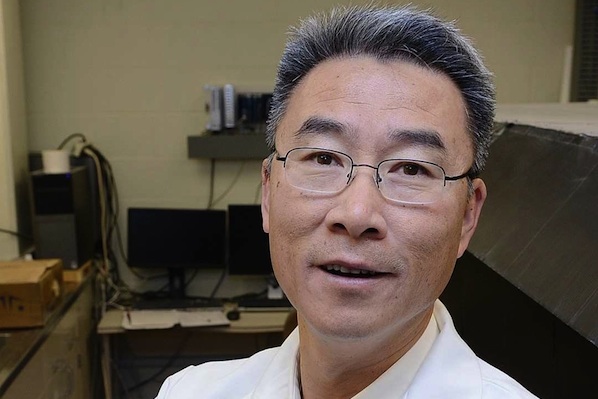
Monitoring Animal Health
Researchers are using remote sensing technologies to increase the health and efficiency of livestock production. One of the studies involved tracking chickens to get a sense of the basics for potential cage-free production.
How many feeders to provide a cage- free flock is one of the many production questions that need answering, says Hongwei Xin, director of the Egg Industry Center and distinguished professor in agricultural and biosystems engineering. A remote sensing study sought to shed some light on the question by tagging the chickens and monitoring their actions.
“We wanted to understand the chicken’s behavior. If given the choice in a given environment, what would the chicken do? And what would the chicken do if you had a different stocking density,” he says.
He and Lie Tang, an associate professor in agricultural and biosystems engineering who specializes in agricultural automation and robotics, monitored the cage-free flock, measuring factors including feed efficiency, indoor environment, egg production and mortality.
A transponder on the chickens’ legs was tracked using an antenna embedded in the floor. The system was combined with a 3D camera allowing them to see and record how the chickens moved. Tang says they found individual chickens in the cage-free setting exhibit dynamic movement and other behaviors.
“Bio-energetic information was assessed to provide the foundation for future design in cage-free, or as we call them alternative housing systems, because they are so new. We also wanted to see how much feeder space is adequate,” Xin says.
Feed efficiency suffered because the chickens were more active. The study found from 10 to 25 percent more feed is needed for the same production. They are using the same system to see if different lighting makes them less active.
Xin foresees a time when robots might act as an electronic stockman. Robots could be sent into flocks of broiler chickens to get the birds up to exercise, look for health problems and remove carcasses.
Xin says a new study he is leading with Anna Johnson, associate professor of animal science, and Tami Brown-Brandl, an agricultural engineer with the USDA Meat Animal Research Center, will use remote sensing to determine if the size of swine farrowing crates needs to be changed for the health of the animals.
“We’ve been using 5 by 7-feet farrowing crates since the 1950s. The sows are getting bigger and the litters are getting bigger. The question is, what is the proper size to accommodate today’s sow and litter,” he says.



